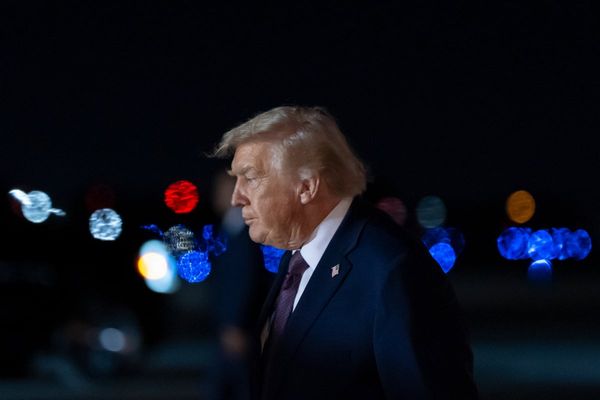The communications out of the Federal Reserve on Wednesday show the present and potential future of American monetary policy in vivid contrast.
The big picture: Current leaders of the central bank view the U.S. economy as in basically sound shape, experiencing some labor market softness that is nothing a few modest interest rate cuts can't solve. They emphasize sober consensus-building and moving gradually and predictably.
- Barely two days into his time as a Fed governor, Trump appointee Stephen Miran wants a substantial resetting of rates lower. His past comments and writings also suggest an eagerness for much more sweeping change in the institution.
- As the president installs other appointees at the Fed — including a new chair eight months from now — it is an early glimpse of major change coming to the institution with which Wall Street has a long love/hate relationship.
Driving the news: The Fed policy committee delivered a highly telegraphed quarter-point interest rate cut, and most policymakers implicitly forecast additional cuts at the two remaining meetings this year.
Yes, but: Miran, who was confirmed Monday evening, dissented, favoring a half-point cut at this meeting.
- The rate projections don't attach names to forecasts, but there is not much doubt that he was the one who submitted an extreme outlier, judging that it would be appropriate to bring rates down to 2.9% by year-end from their current levels above 4%.
- This comes after wording during his confirmation hearing that have bond traders suspecting he will argue for more creative use of the Fed's tools to lower long-term interest rates, as well as past writing that argued for more wholesale reform of how the Fed operates.
State of play: Miran's term as a Fed governor is scheduled to end in January (though he could stay on if no replacement is confirmed), and he's one of 19 members of the Federal Open Market Committee.
- But his appointment — and from other Trump administration officials and the list of candidates to replace Fed chair Jerome Powell — points to something bigger.
- It is an early step in a deeper attempt to rewire the Fed in Trump's image. That means more focus on delivering the low interest rates the president seeks, and less reverence for the process and pieties that are part of the Fed's institutional identity.
What they're saying: "The buttoned-down and boring-by-design world of American central banking was upended on Wednesday" amid the Miran dissent, wrote Joe Brusuelas, chief economist at RSM.
- His modeling suggests near-term rate cuts are not justified. But, Brusuelas wrote, "Given the coming changes to Federal Reserve personnel next year, we urge all to take this forecast with more than a grain of salt."
Of note: Powell made clear that for now, Miran's views are outliers on the policy committee. "There wasn't widespread support at all" for a larger half-point rate cut, he said in the news conference.
- "I think we've done very large rate hikes and very large rate cuts in the last five years, and we tend to do those at a time when you feel that policy is out of place and needs to move quickly to a new place. That's not at all what I feel certainly now. I feel like our policy has been doing the right thing so far this year."
The bottom line: The Fed of the future — how it communicates, how it sets monetary policy, the tools it is willing to use — probably won't look like the Fed of the past.







